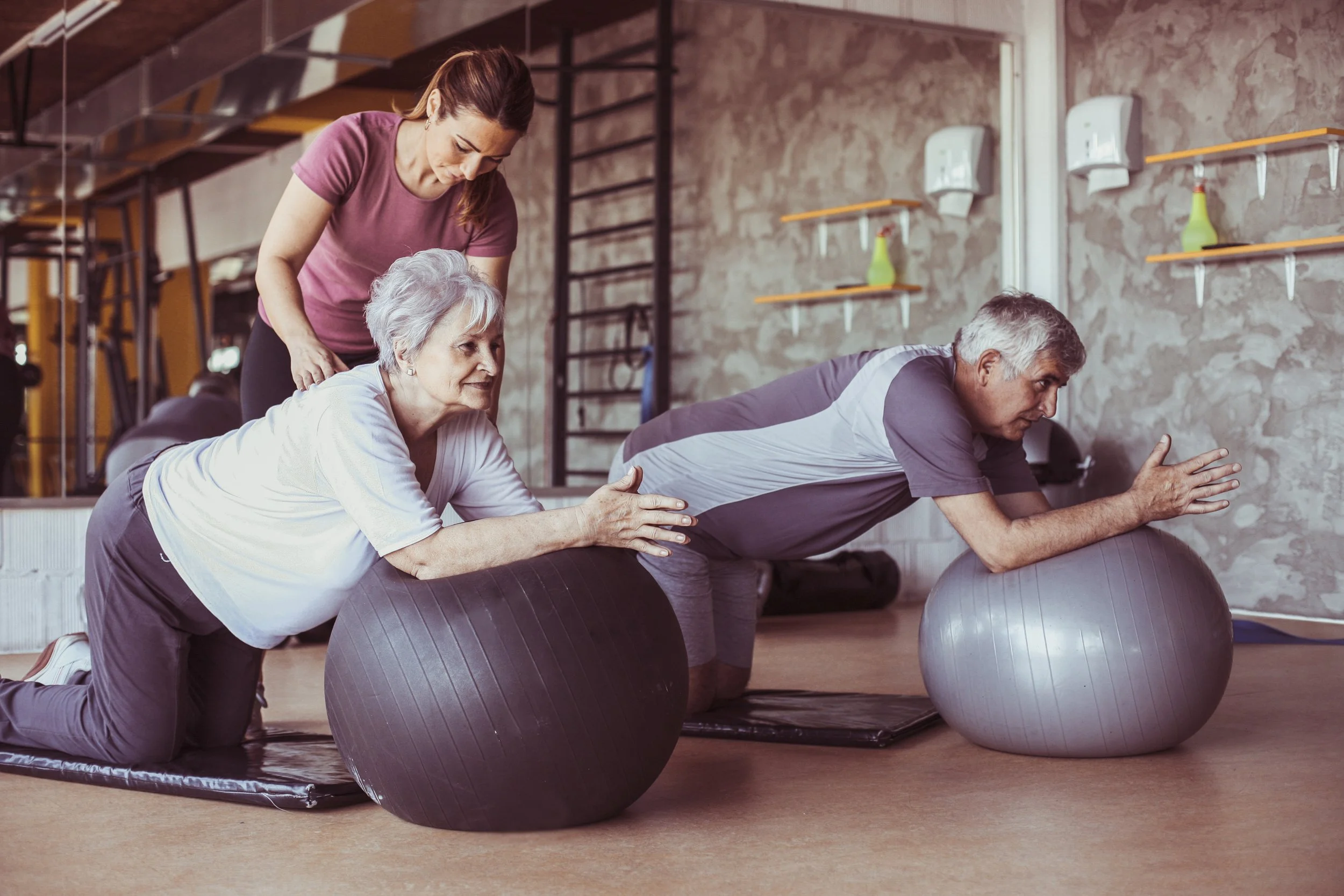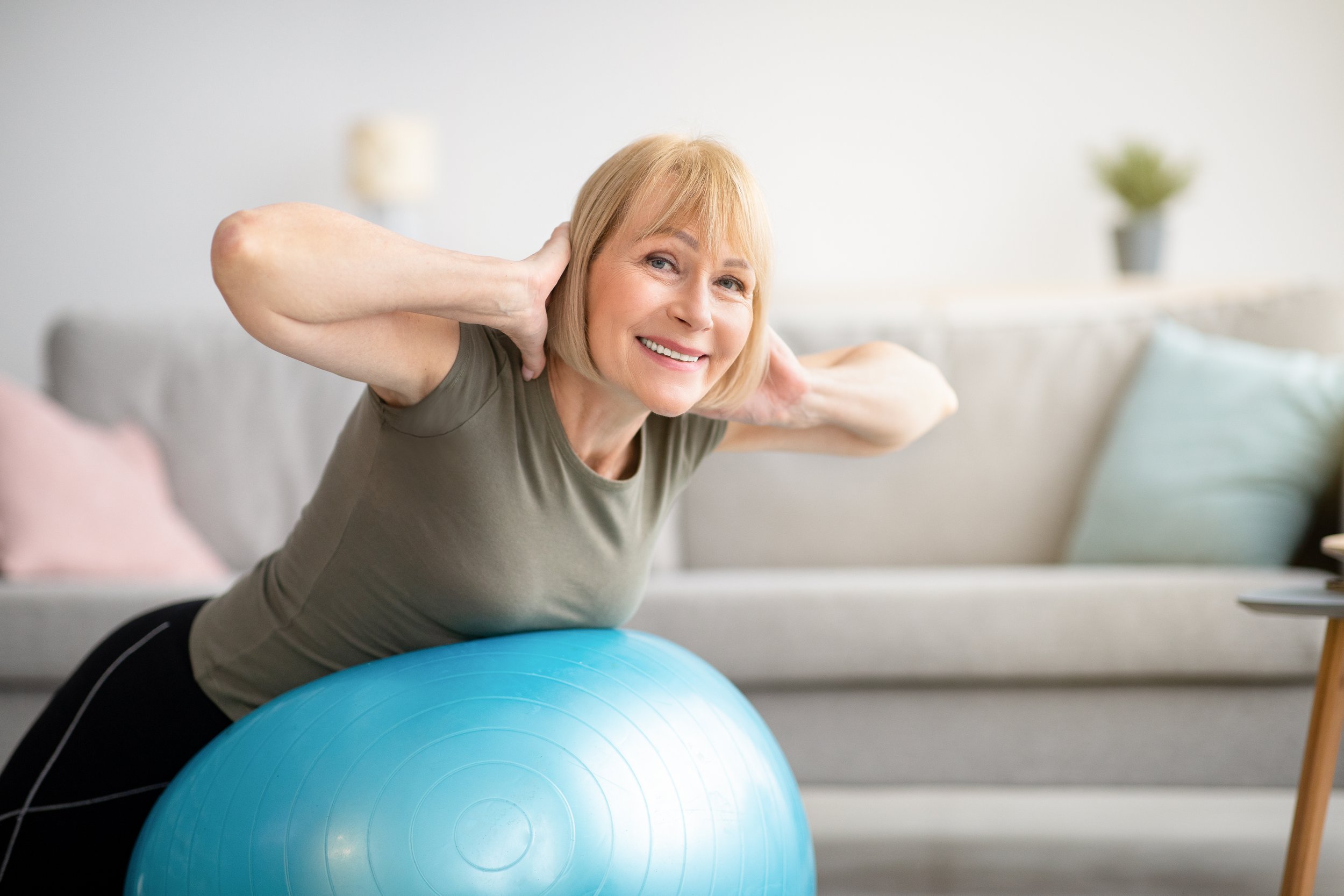Aging Gracefully: Understanding the Changes in Our Bodies and Staying Healthy
As the years pass, we might feel a bit slower, experience stiffness in the morning, or find it challenging to maintain the same workout intensity without feeling sore. While these changes are a natural part of aging, understanding how our bodies evolve on a cellular level can empower us to take steps to slow down the process. In this blog post, we'll explore the physiological changes that accompany aging and discuss practical strategies to stay active and healthy as we age.
What Happens When We Age
Lower Water Content
Older adults naturally have less water in their bodies than younger people. Staying hydrated is important for our bodies to function, but changes to the body mean that many older adults simply don’t feel thirsty, putting them at risk for dehydration.
Decreased water content causes physical changes to our bodies, too. One reason we see people decrease in height as they age is because the discs in our spine lose water over time. A sedentary lifestyle exacerbates this process, so staying active is key to fighting water loss.
Decrease in Elastin
You’ve probably heard that elastin loss is part of why we acquire wrinkles and sagging skin as we age, but elastin plays an even more important role in the body. This protein supports our vital organs and allows tissues to return to their original shape. Elastin loss can cause our muscles to become rigid and stiff.
While we can’t reproduce elastin once it’s gone, there are ways to slow down the process. Using sunscreen, eating foods high in antioxidants, and regular strength training can help maintain elastin and the flexibility of our skin and muscle tissue.
Bone Loss
As we age, our bones lose their density and mineral content, making them more fragile and prone to fractures. Higher risk of fractures is particularly concerning in older adults because they can lead to a loss of independence.
However, weight lifting and strength training play a crucial role in supporting joint health and reducing the risk of bone breakdown. Wolff's Law states that bones become thicker and stronger when subjected to force. Resistance training and bodyweight exercises are a great way to maintain bone density as we age. Creating an exercise habit is especially important for women, who are more susceptible to bone loss.
Nervous System Changes
Slower reaction time in older adults can affect our ability to move quickly and efficiently, making engaging in athletic activities more challenging. Delayed reaction time can impact rapid decision-making and coordinated movements needed for navigating uneven terrain or participating in sports.
Proprioception is the body's ability to sense its position in space, and it plays a crucial role in maintaining stability and preventing falls. By engaging in balance exercises, individuals can stimulate the neural pathways responsible for proprioception, contributing to improved overall coordination and a better ability to adapt to changes in the environment. Balance exercises can take various forms, including standing on one leg, heel-to-toe walking, or using stability balls and balance boards. These activities challenge the nervous system to adapt and refine its responses, ultimately enhancing the connections between the brain and muscles involved in maintaining stability.
Slower Healing and Recovery
Reduced cellular turnover, hormonal fluctuations, and alterations in the inflammatory response affect the body’s ability to repair and regenerate tissues. This means that older adults require more time to recover after exercise, to lower the risk of injury from overtraining.
Your workout regimen should take into account your individual fitness level, health status, and specific needs associated with aging. We recommend building a well-rounded workout routine that incorporates flexibility and resistance training. Older adults should consult a healthcare professional who considers your individual health condition, fitness goals, and the limitations that come with aging to create a safe and effective exercise program.
Hormonal Changes in Postmenopausal Women
Menopause creates drastic changes in the body, including lower estrogen level. Estrogen helps maintain bone density and supports muscle function, so low estrogen following menopause can lead to accelerated muscle loss and increased vulnerability to conditions like osteoporosis. One way to counteract these effects is by creating an exercise routine early and maintaining it consistently through menopause and beyond.
Weight-bearing exercises and strength training are beneficial for postmenopausal women. These exercises stimulate the muscles, promoting hypertrophy (muscle growth) and building strength. Engaging in resistance training also places stress on bones, triggering a response that helps maintain or improve bone density, reducing the risk of fractures and osteoporosis.
Remember, "If we don't use it, we lose it."
Understanding how our bodies change as we age allows us to approach our wellness journey with a proactive mindset. By focusing on proper movement, engaging in strength training, and incorporating exercises that challenge both our bodies and minds, we can slow down the aging process and maintain a higher quality of life. Embracing the mantra, "If we don't use it, we lose it," reminds us that staying active and mindful throughout our lives is the key to aging gracefully.
If you’re an older adult looking to start a new habit of exercise, we strongly recommend that you consult with a healthcare professional. Seeking guidance from your physician or the team at Restore Physical Therapy is a prudent first step. Our team of therapists are qualified doctors with specialized training in injury prevention and management. From designing a customized exercise plan to monitoring progress and addressing any concerns that may arise, our healthcare professionals are dedicated to facilitating a safe and rewarding exercise experience for older adults.


